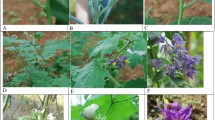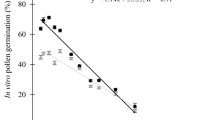Abstract
Coconut (Cocos nucifera L.) and arecanut (Areca catechu L.) are important commercial crops sustaining the life of millions of small and marginal farmers. The coconut palm (Arecaceae family), cultivated across the tropical regions of the world, is monotypic and the genetic diversity is distributed amongst various ecotypes and landraces. Areca catechu is one of the commercially important palms, also belonging to the family Arecaceae and it is the only cultivated species in the genus Areca. There exists a vast potential for implementation of in vitro technologies for conservation of coconut and arecanut genetic resources in addition to various exsitu and insitu approaches. Through pollen cryopreservation, pollen grains from desirable palms can be stored over a long period of time in addition to storage of multiple genotypes in small space for their future utility in case of threat from biotic and abiotic factors. The protocol for coconut cryopreservation, developed at Indian Council of Agricultural Research-Central Plantation Crops Research Institute (ICAR-CPCRI), involves desiccation of male flowers at 40°C for 24 h followed by pollen extraction. The protocol is simple and highly effective for the implementation of pollen cryobank to complement the field germplasm collections as well as for its utilization in hybridization programs. Besides this, a protocol has also been developed for pollen collection and its desiccation, in vitro germination, pollen cryopreservation, and its viability and fertility assessment in arecanut. Using this procedure, pollen extraction could be done from fully opened male flowers following desiccation at room temperature.
Access this chapter
Tax calculation will be finalised at checkout
Purchases are for personal use only
Similar content being viewed by others
References
Aldaba VC (1921) The pollination of coconut. Philip Agric 10:195–210
Menon KPV, Pandalai KM (1958) Floral biology. In: The coconut palm. A monograph. Indian Central Coconut Committee, Ernakulam, pp 39–85
Patel JS (1938) The coconut-A monograph. Govt. Press, Madras, pp 90–133
Engelmann F (1997) in vitro conservation methods. In: Ford Lloyd BV, Newbury HJ, Callow JA (eds) Biotechnology and plant genetic resources: conservation and use. CABI, UK, pp 119–162
Hoekstra FA (1995) Collecting pollen for genetic resources conservation. In: Guarino L, Rao VR, Reid R (eds) Collecting plant genetic diversity. Technical Guidelines. IPGRI/FAO/UNEP/IUCN. CABI publishing, Wallingford, UK, pp 527–550
Heslop-Harrison J (1979) An interpretation of the hydrodynamics of pollen. Am J Bot 66:737–743
Barnabas B, Rajki E (1981) Fertility of deep-frozen maize (Zea mays L.) pollen. Ann Bot 48:861–864
Karun A, Sajini KK, Niral V, Amarnath CH, Remya P, Rajesh MK, Samsudeen K, Jerard BA, Engelmann F (2014) Coconut (Cocos nucifera L.) pollen cryopreservation. CryoLetters 35(5):407–417
Caroline de AM, Moura CRF, Pinto de Lemos EE, Ramos SRR, Ribeiro FE, Ana da Silva L (2014) Pollen grain viability of coconut accessions at low temperatures. Acta Sci Agron 36(2):227–232
Raghavan V, Baruah HK (1956) On factors influencing fruit-set and sterility in arecanut (Areca catechu Linn.): I. Studies on pollen grains. J Indian Bot Soc 35:139–151
Bhat SK, Krishna Murthi S, Madhava Rao VN (1962) South Indian Hortic 10:22–34
Karun A, Sajini KK, Muralikrishna KS, Rajesh MK, Engelmann F (2017) Cryopreservation of arecanut pollen. CryoLetters 38(6):463–470
Author information
Authors and Affiliations
Corresponding author
Editor information
Editors and Affiliations
Rights and permissions
Copyright information
© 2023 The Author(s), under exclusive license to Springer Science+Business Media, LLC, part of Springer Nature
About this protocol
Cite this protocol
Karun, A., Muralikrishna, K.S., Sajini, K.K., Rajesh, M.K. (2023). Cryopreservation of Coconut and Arecanut Pollen. In: Rajasekharan, P., Rohini, M. (eds) Pollen Cryopreservation Protocols . Springer Protocols Handbooks. Humana, New York, NY. https://doi.org/10.1007/978-1-0716-2843-0_50
Download citation
DOI: https://doi.org/10.1007/978-1-0716-2843-0_50
Published:
Publisher Name: Humana, New York, NY
Print ISBN: 978-1-0716-2842-3
Online ISBN: 978-1-0716-2843-0
eBook Packages: Springer Protocols




